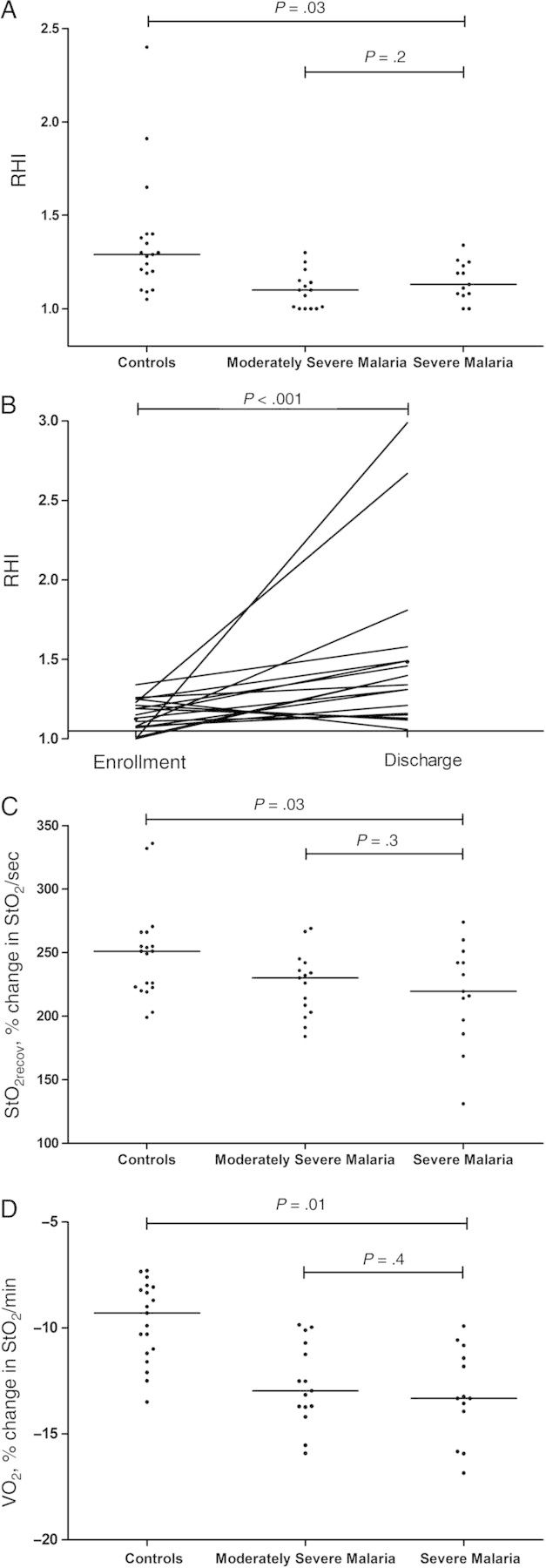Figure 1.

A, Reactive hyperemia index (RHI), determined by peripheral arterial tonometry, in healthy controls, children with moderately severe malaria, and children with severe malaria (P = .03, by the Kruskal–Wallis test). B, RHI at enrollment and discharge for patients with severe malaria (P < .001, by the Wilcoxon paired sign ranked test). Horizontal bars represent pairwise comparisons between enrollment and discharge values. C, Skeletal muscle reoxygenation rate (StO2recov; defined as the microvascular function or rate of increase in StO2) after release of ischemic stress in healthy controls, children with moderately severe malaria, and children with severe malaria (P = .03, by the Kruskal–Wallis test). D, Skeletal muscle oxygen consumption (VO2) in healthy controls, children with moderately severe malaria, and children with severe malaria (P < .001, by analysis of variance). Horizontal lines represent the median values for each group. Horizontal bars represent pairwise comparisons between groups.
